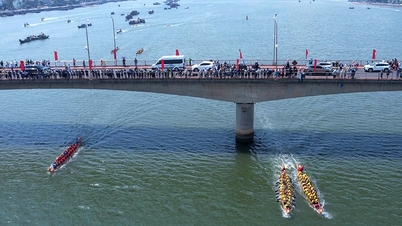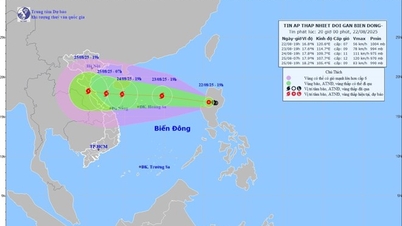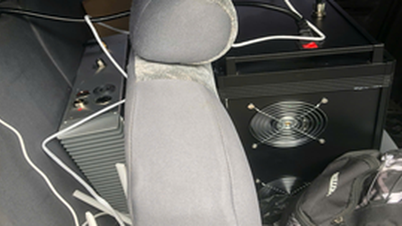Ukraine suffered one of its heaviest bombardments on March 9, when Russia attacked targets across the country. Ukrainian defense forces said Russia used hypersonic missiles in the attacks.

Russia's hypersonic missile. Photo: RMD
Ukrainian officials say at least nine civilians have been killed in rocket attacks on the capital Kiev and elsewhere, including the eastern city of Kharkiv and villages in the western Lviv region.
Russia has used hypersonic missiles before, in the early weeks of the war in 2022. They are considered a special type of missile. Here's why.
'Invincible' hypersonic missile?
“Invincible” is what Russian President Vladimir Putin called the hypersonic missile in 2018 when he unveiled his country's missile arsenal.
Despite the exaggeration, there are some elements that are true. Hypersonic missiles differ from conventional ballistic weapons in that they are harder for missile defense systems to detect. They travel at much higher speeds than conventional ballistic missiles.
How fast is the Dagger Missile?
Hypersonic missiles fly 5 to 10 times the speed of sound, known as Mach 5 to Mach 10.
For comparison, the world's fastest commercial airliner, the Concorde, flies at twice the speed of sound. Concorde is a supersonic aircraft with a top speed of 2,180 km/h, or Mach 2.04.
The hypersonic missile used by Russia in its attacks on Ukraine is called the “Kinzhal,” or Dagger. It is 8 meters long. Some experts say it travels at 6,000 kilometers per hour, or about Mach 5. Others say it travels at Mach 9 or even Mach 10.
In fact, they're so fast that "the air pressure in front of the weapon forms a plasma cloud as it moves, absorbing the radio waves," as weapons experts at the US website Military.com explain.
That makes the "Kinzhal" and other hypersonic weapons very difficult for radar systems to detect.
Low altitude
Hypersonic missiles also fly at much lower altitudes than conventional ballistic missiles.

They follow a low-atmospheric ballistic trajectory. That means that by the time radar-based missile defense systems track them, they are so close to their target that in many cases it is too late to intercept them.
In addition, hypersonic missiles can change direction in flight.
Scope of operation
The hypersonic missile Russia used in Ukraine was launched from an aircraft. Other hypersonic weapons can be deployed from naval ships and submarines. And they are capable of carrying nuclear warheads.
The Kinzhal can hit targets up to 2,000 km away. Other hypersonic missiles have a range of about 1,000 km.
If hypersonic missiles were deployed in the Russian exclave of Kaliningrad, several European capitals would be within range. Kaliningrad is separated from Russia and borders Poland, Lithuania and the Baltic Sea. The German capital Berlin is less than 600 km away.
But some analysts say that despite the advantages hypersonic missiles offer over conventional ballistic weapons, Russia will not use them indiscriminately.
US Air Force General Glen D. VanHerck told a US Senate Armed Services subcommittee in May 2022 that Russia was facing "accuracy challenges with some hypersonic missiles".
Hoang Nam (according to DW)
Source




![[Photo] President Luong Cuong attends special political-artistic television show "Golden Opportunity"](https://vphoto.vietnam.vn/thumb/1200x675/vietnam/resource/IMAGE/2025/8/22/44ca13c28fa7476796f9aa3618ff74c4)
![[Photo] Prime Minister Pham Minh Chinh chairs the conference to review the 2024-2025 school year and deploy tasks for the 2025-2026 school year.](https://vphoto.vietnam.vn/thumb/1200x675/vietnam/resource/IMAGE/2025/8/22/2ca5ed79ce6a46a1ac7706a42cefafae)


























































































Comment (0)